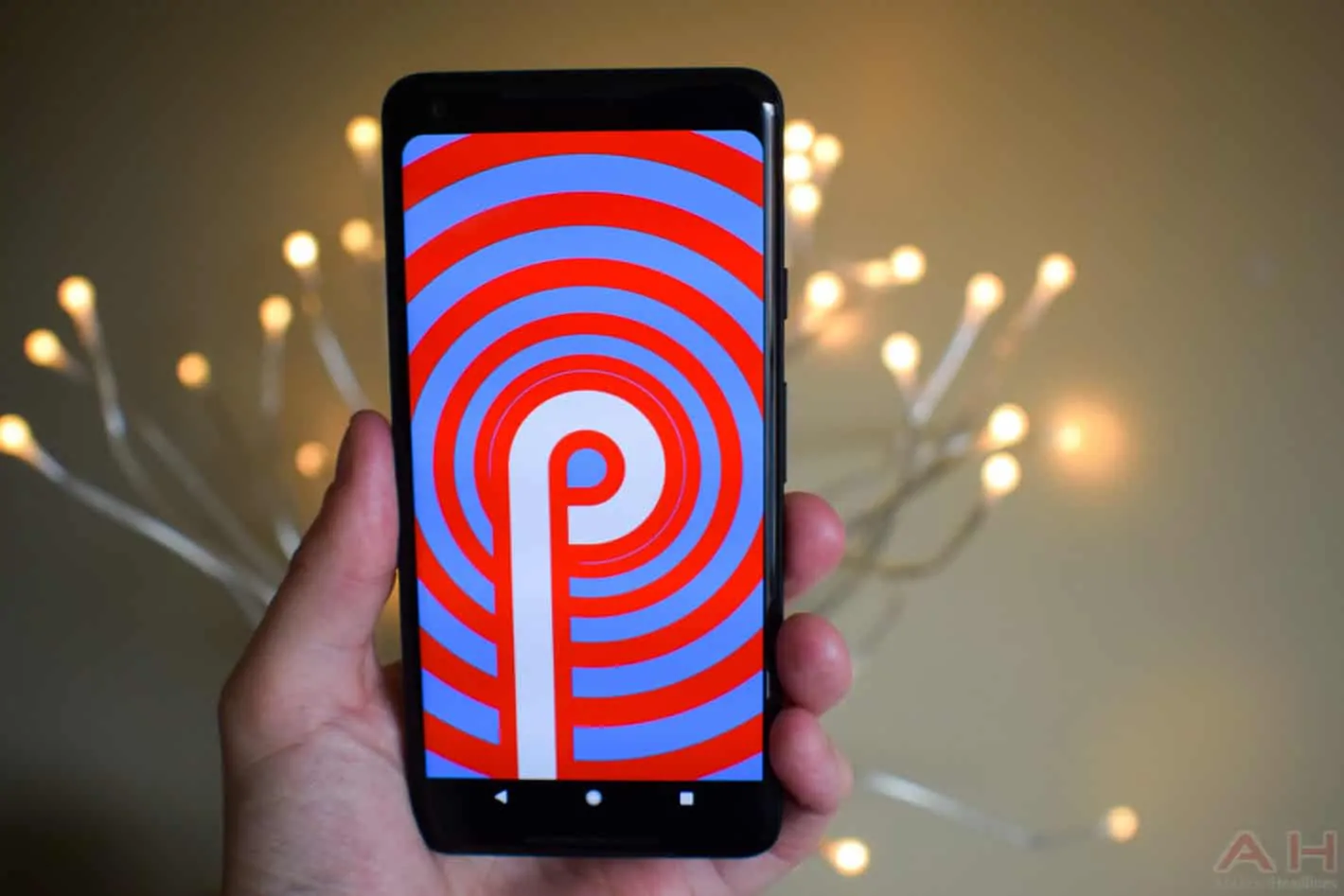While the name of the latest version of Android might be new, the actual software is not as new, at least compared to the annual OS changes Google has been introducing in recent years. The company debuted the first developer preview of Android 9 Pie back in March and continued to release new previews almost every month since. Which has given us plenty of time to play around with Android 9 Pie and see what the best features of the new version of Android really are. We have hence rounded up the top ten best new functionalities found in Android 9 Pie so that you know what to expect once you get the new OS version up and running.
Adaptive Battery
For many, this is going to be the biggest feature coming in Android 9 Pie, and that is because Google is essentially using artificial intelligence to improve your battery life. This feature is going to extend your battery life by limiting resources for apps that aren’t used often. The way this works is your phone will find out which apps you use often over time, and those that aren’t launched frequently will get less battery to use. In the beta versions of Android 9 Pie, this didn’t seem to offer a big change in battery life, but that’s likely to change once the stable version of the OS hits your device.
New Screenshot Notification & Tools

In Android 9 Pie, when you take a screenshot, you will get a heads-up notification telling you that the screengrab is being saved. Once it’s stored, it will say that it is saved and provide you with a shortcut to some quick editing tools. From there, you can choose to Share, Edit or Delete the screenshot, with the change eliminating the need for going into the Gallery or Photos app to accomplish the same. In overall, this addition should make taking a screenshot a much better experience.
New Gesture Controls
Google debuted new gesture-based controls in Android 9 Pie, which many might think is Google copying from Apple with the iPhone X, but this is common between the world’s two most popular mobile operating systems. With this new gesture-based control scheme, you get a back button on the left side and then a small oval in the center. The oval acts as a home button. But if you grab the oval and move it left to right, you can switch between apps in Android 9 Pie. If you are looking to jump into your app drawer, just grab the oval and swipe up.
For many, these new gesture-based controls in Android 9 Pie are going to take a bit of getting used to. They have definitely already gotten much speedier than they were in the first beta that it was released in and might also end up being improved even further going forward. Though, users do have the option of turning off these gestures in the settings. Simply go to Settings, tap on System, then select Gestures, and turn off the “Swipe Up on Home button” option. It’s that simple.
New Quick Settings Pulldown & Notification Management
Google has put some new Material Design aspects in Android 9 Pie this time around, starting with the notification shade and the Quick Settings panel. The big difference here is that instead of just having icons in Quick Settings, they are now in circles. When the settings are turned on, they turn blue, and they are gray when they are off. The Notification Shade does go from dark gray to white, depending on your wallpaper. So if you have a lighter wallpaper, it’ll show a white background, while a darker wallpaper will give you a gray Notification Shade. With this slight redesign, Google has also moved the Settings button to the bottom. That means that if you are looking to jump into the settings quickly, you’ll need to pull the Notification Shade all the way down to see the entire panel.
With Android 9 Pie, Google also added some new Notification Management settings, making it easy to get through the mess that accumulates in your notification shade. If you go into Settings > Apps > Notifications, you can adjust which apps are sending you notifications. So if there is one app there that is bugging you with notifications, you can keep it from sending you notifications, if you wish to do so. Something else that Android 9 Pie will do in regards to notifications, is if you are routinely dismissing a notification from one app, it will ask you if you want it to keep showing you these notifications or not. Making it easier to only get the notifications you want.
Multitasking
In Android 9 Pie, Google has redesigned multitasking as well, taking recent apps from showing in a vertical carousel to being displayed in a horizontal one. This is going to make it easier to jump between apps, and if you are using the gesture-based controls, it’s even quicker, as you can quickly bring that oval to the right and let go and it’ll automatically jump to the last app. It also works for going back to that last app by bringing the oval to the left and letting go.
On top of the redesign, Google has also included Quick Text Selection from within the multi-tasking screen. This means that you can easily copy and paste text from one app to the other, without jumping back into that screen. Which can be very useful if you are looking for a particular thing in Google search.
Redesigned Media Controls
Google has made sure that media controls take center-stage in Android 9 Pie. They now rest on the left-hand side of the phone, instead of along the top of the screen. There are now more stops on the volume slider, providing you with more granular options akin to those offered by Samsung and other manufacturers. Above the slider, you also have a shortcut to turn off all notifications, put it on vibrate, or keep notifications on. This is a very easy way to turn off your notifications before heading into a meeting and so forth. Below the slider, you’ll find a gear icon, which will take you to the sound settings. Of course, from there, you can adjust the volume for media, calls, ringers, alarms, and much more. It’s good to see that Google is making media controls take priority in Android 9 Pie, as they should be.
App Actions
App Actions is another new feature in Android 9 Pie that uses machine learning and more general artificial intelligence tech. Your phone learns what apps you use at different times of the day and will show different App Actions in the app drawer. These appear below the top row of apps – which are your most popular apps – and will change based on the time of day. They will allow you to do certain tasks without needing to open particular apps. For example, if you always start a specific Spotify Playlist around 9 AM, your phone will bring that up as an App Action, and you can tap on it, which will open the app on that playlist. Now, if there is an App Action there that you don’t want to see suggested, you can drag it to the home screen and move it to the “Do Not Show” area so as to prevent it from being displayed in that manner in the future.
Redesigned Settings
As is the case with the past few versions of Android, Google has redesigned the settings screen once again. There is some more color in the settings app, with each icon being colored now, which is nice to see, and makes the settings screen a bit less boring. All of the settings are basically in the same place as they were in Oreo. The only difference here is really the icons, which are now colored and in a circle. The suggestions have also been redesigned. Now they are in squares at the top of the settings screen, instead of showing like notifications. Of course, you can still get rid of these, if you wish to do so, by hitting the “X” in the corner. Finally, Google has included an actual search bar in the settings screen, instead of just a magnifying glass, which should make discovering niche options easier.
Adaptive Brightness
Much like the Adaptive Battery feature we talked about already, Adaptive Brightness is also using artificial intelligence. It is learning from your usage, as well as the lighting in the room you’re in, to find out how bright the phone needs to be to suit your needs and preferences. Now typically, you could just keep the brightness on auto-brightness and it would work pretty well. But this is designed to keep the brightness at a perfect level, making it easy to read your phone’s display in bright sunlight, while also saving some battery. This does result in it being a bit more aggressive than auto brightness, but it does work quite nicely and still manages to conserve energy.
Digital Wellbeing
This feature was announced at Google I/O but did not show up in any of the betas, and it won’t be available in the stable version of Android 9 Pie from day one. It will be available in the next beta for Pixel devices, and it will begin rolling out this fall to Pixel devices, followed by Android One and other smartphones. Essentially, Digital Wellbeing is here to help you use your handset less.
There are basically four parts of Digital Wellbeing. There’s the Dashboard, App Time, Do Not Disturb and Wind Down Mode. The Dashboard will show you how much time you are spending on your device. And it is broken down based on the apps you’ve spent time in and how many times you pick up your phone and unlock it, as well as the amount of notifications you get. With the App Timer, you can limit how much time you spend in each app. So, if you want to limit yourself to an hour of Twitter per day, Digital Wellbeing will do that for you. Do Not Disturb will mute your phone, but now it will also keep notifications from showing up visually. Finally, the Wind Down Mode will turn on the Night Light when it gets dark, and then start to fade to grayscale as it approaches the bedtime you’ve chosen. So that you can spend less time on your phone at night and more time sleeping.
Conclusion
On paper, Android 9 Pie doesn’t look like that big of an update to Android. But there are a ton of new features and small changes on offer here. Going from Adaptive Battery and Brightness, to Digital Wellbeing and the slight redesigns of certain parts of the operating system, it should certainly deliver a better user experience overall. There are literally hundreds of other features that are included in Android 9 Pie but many of them are smaller and/or under-the-hood improvements that most people won’t even realize are part of Android 9 Pie. As already mentioned, Android 9 Pie will begin rolling out today, with Pixels and Android One devices getting it first. Other smartphones will get it eventually, once Google’s partners have it ready to go.











